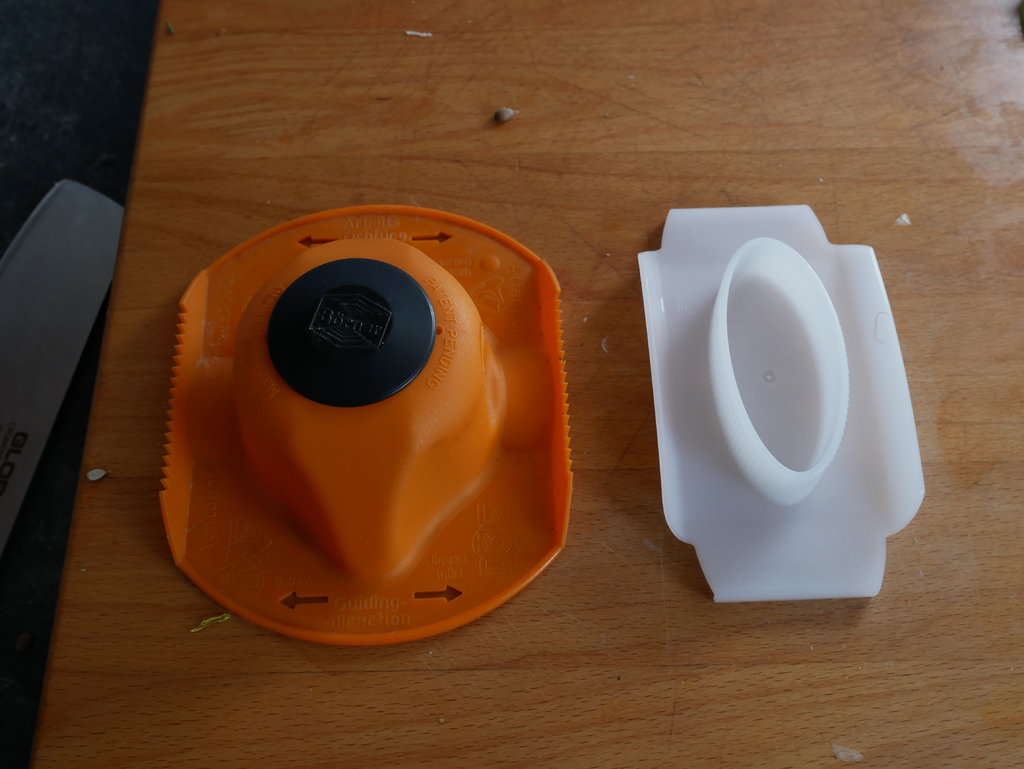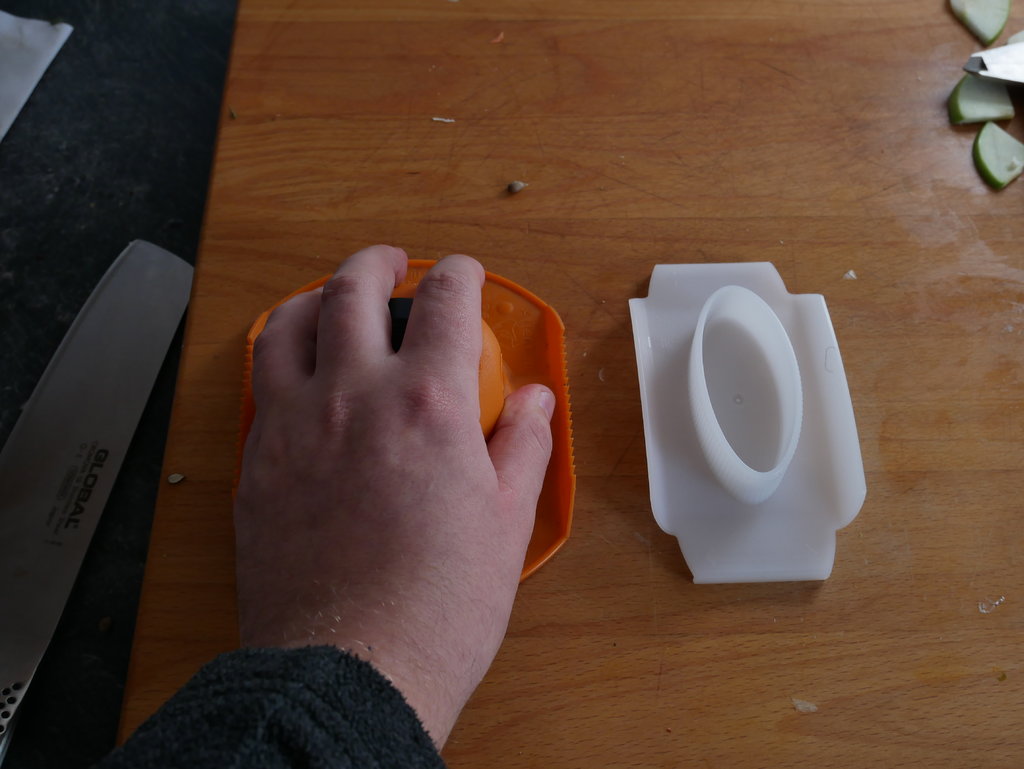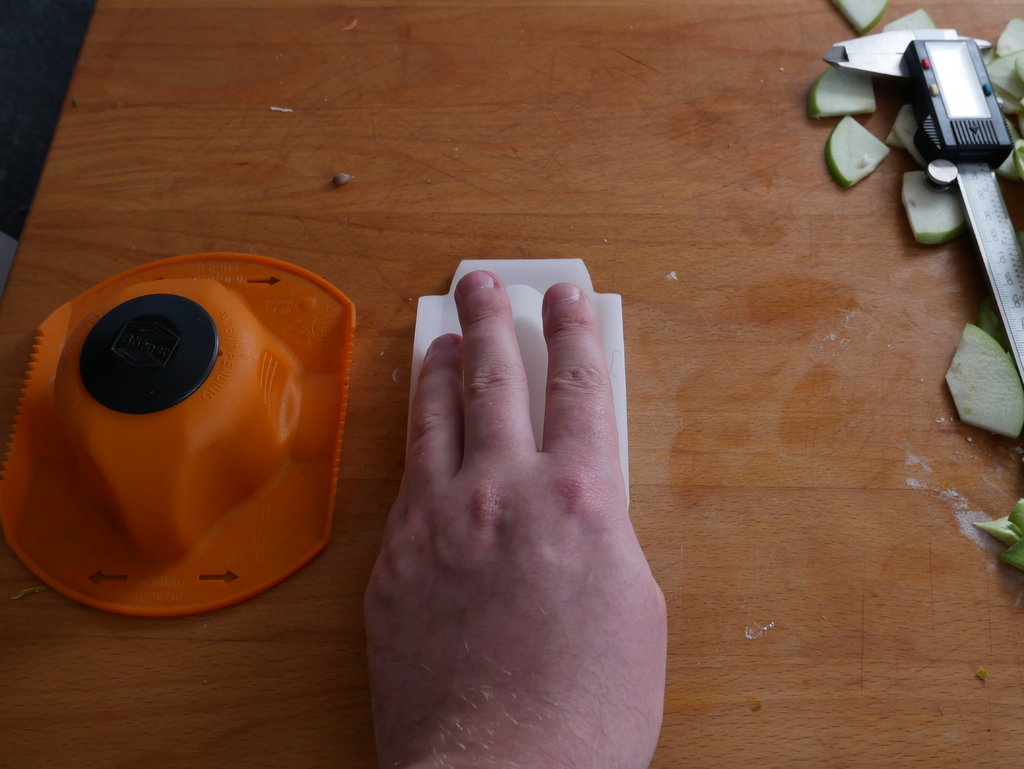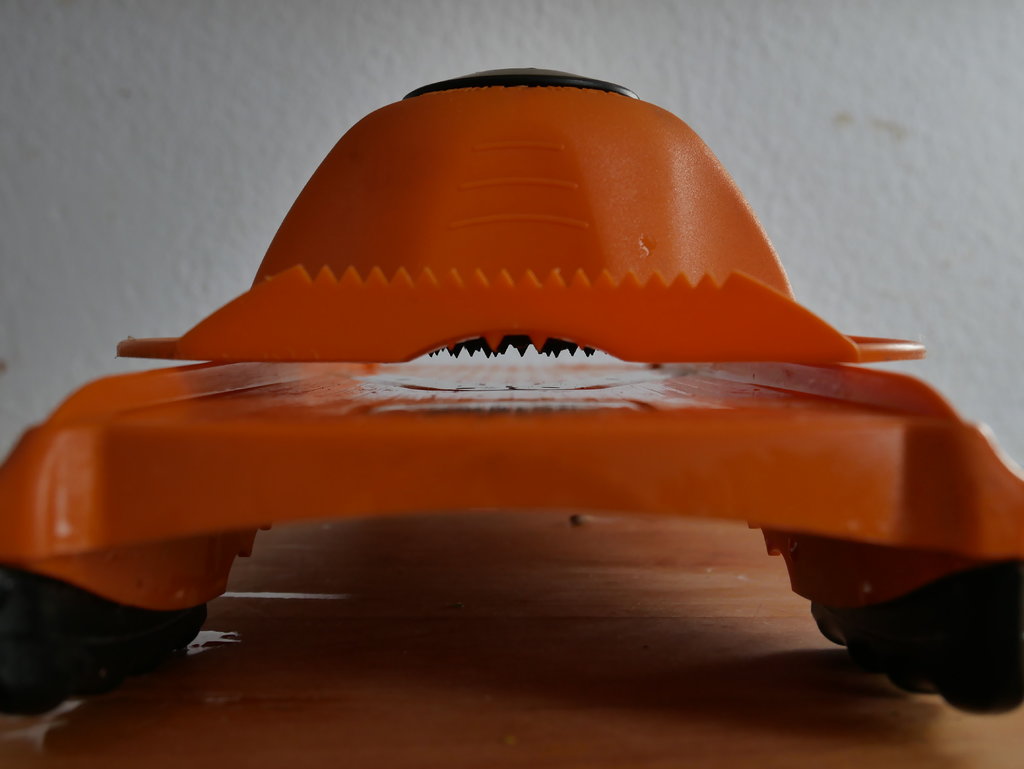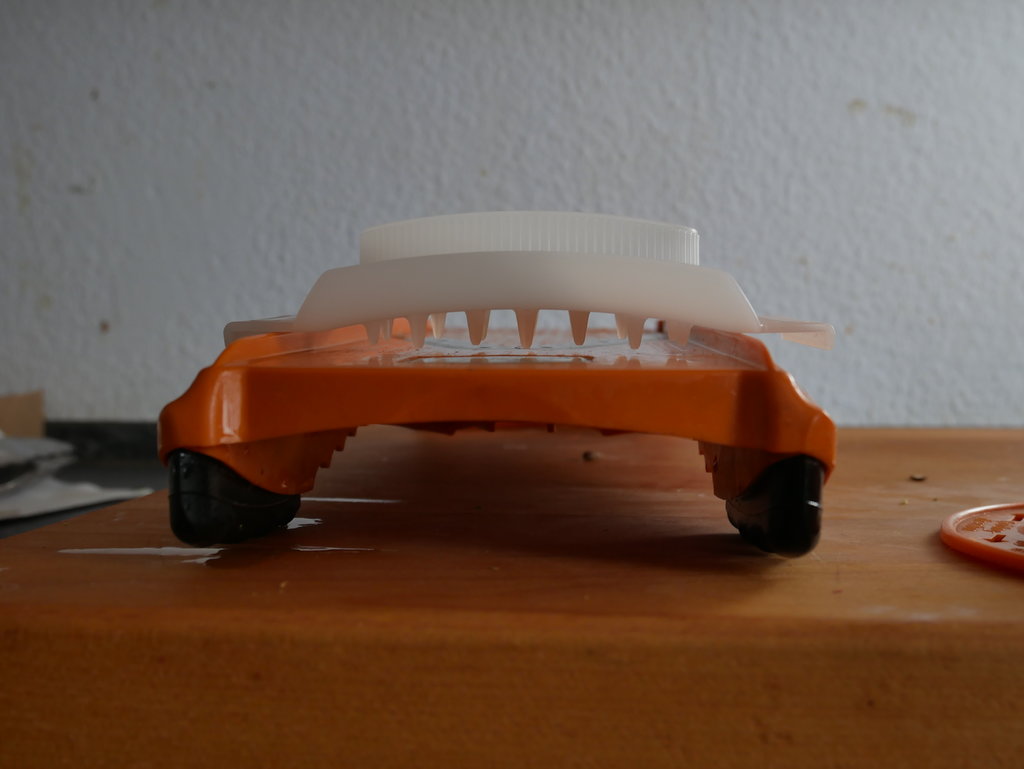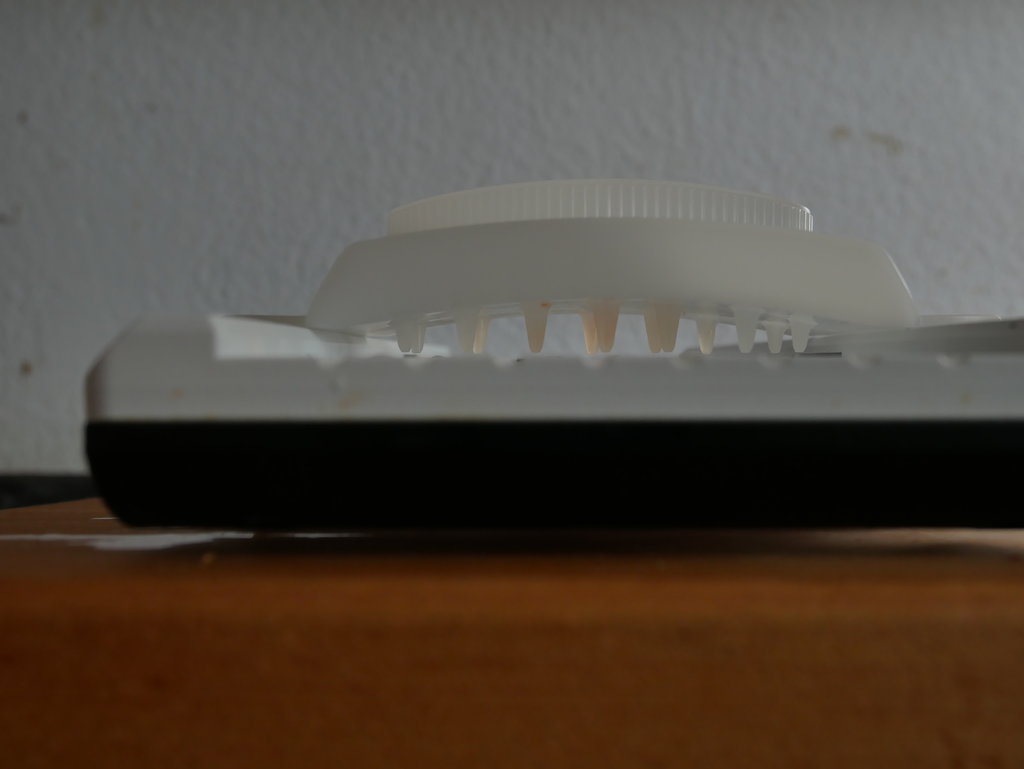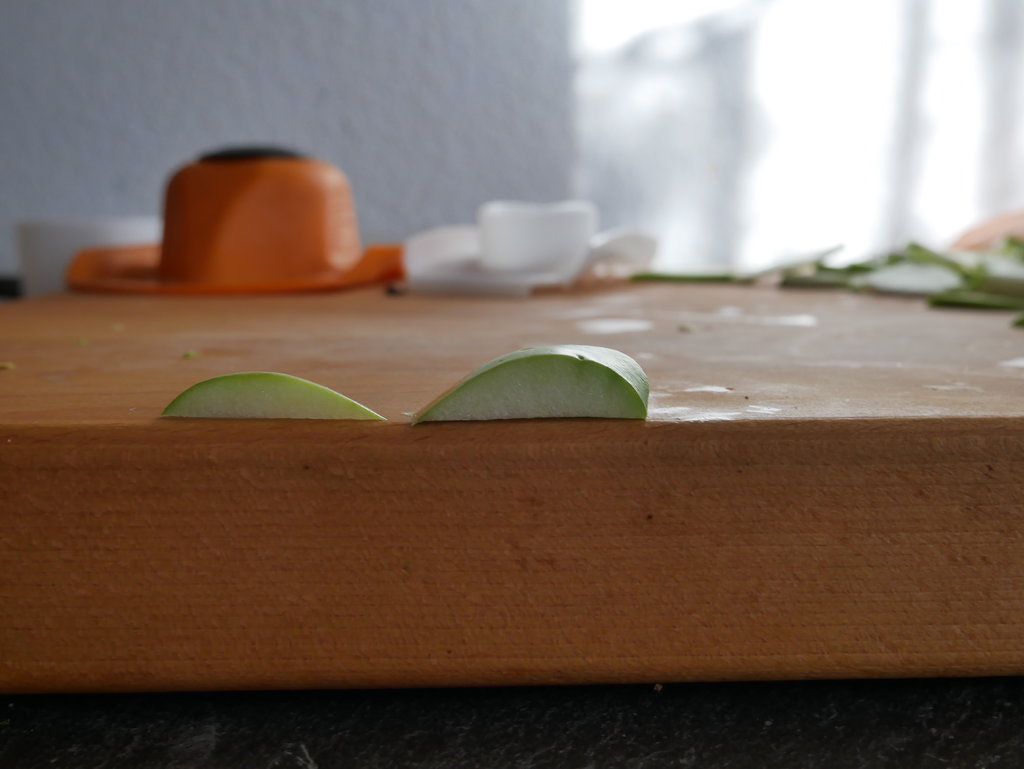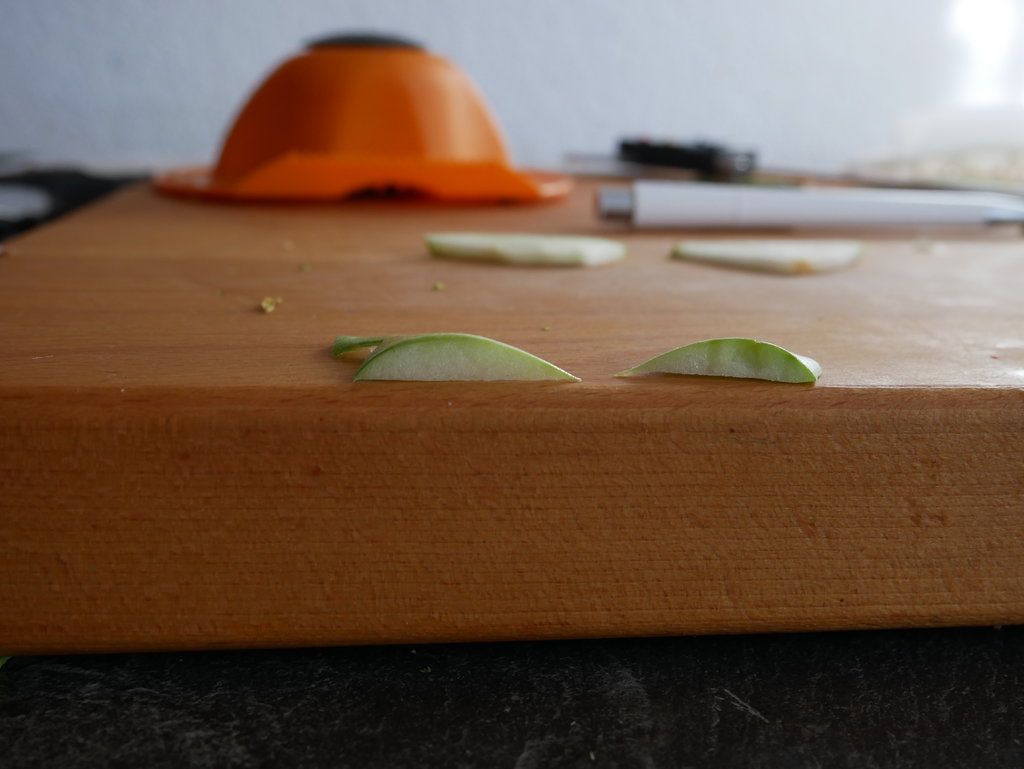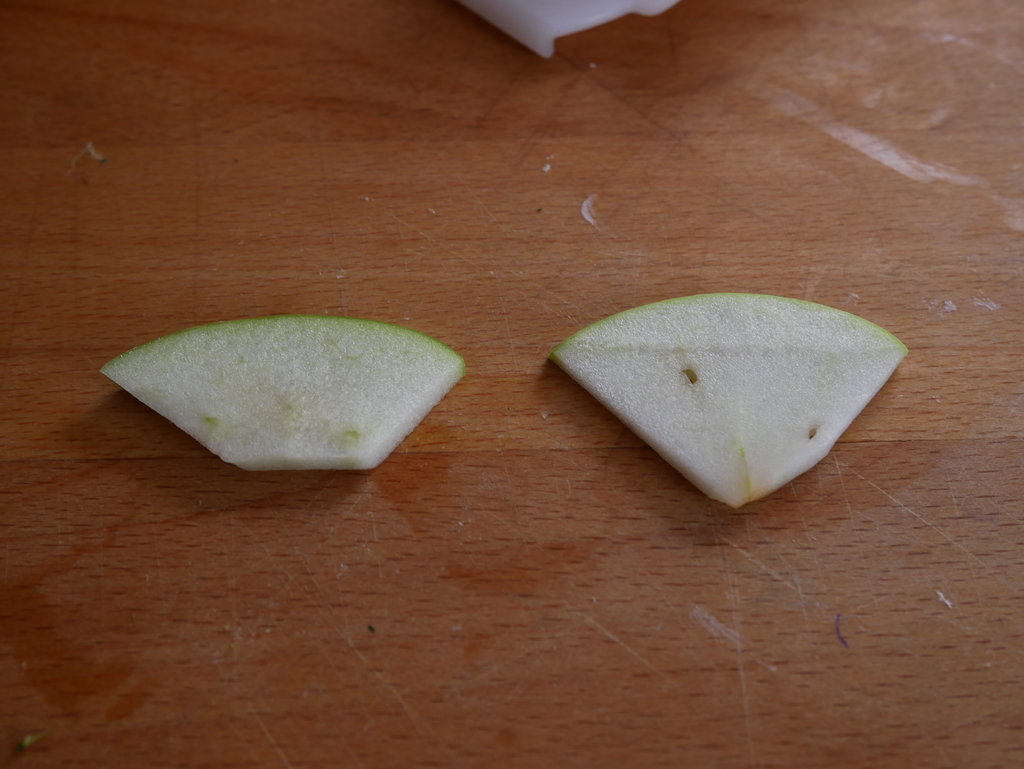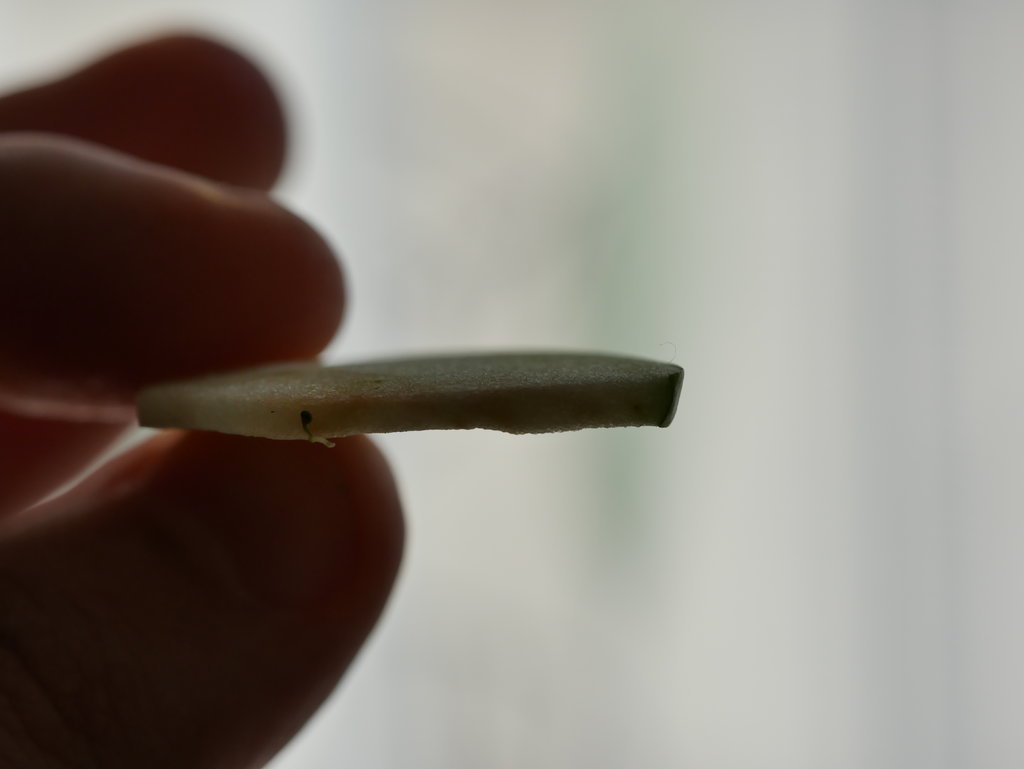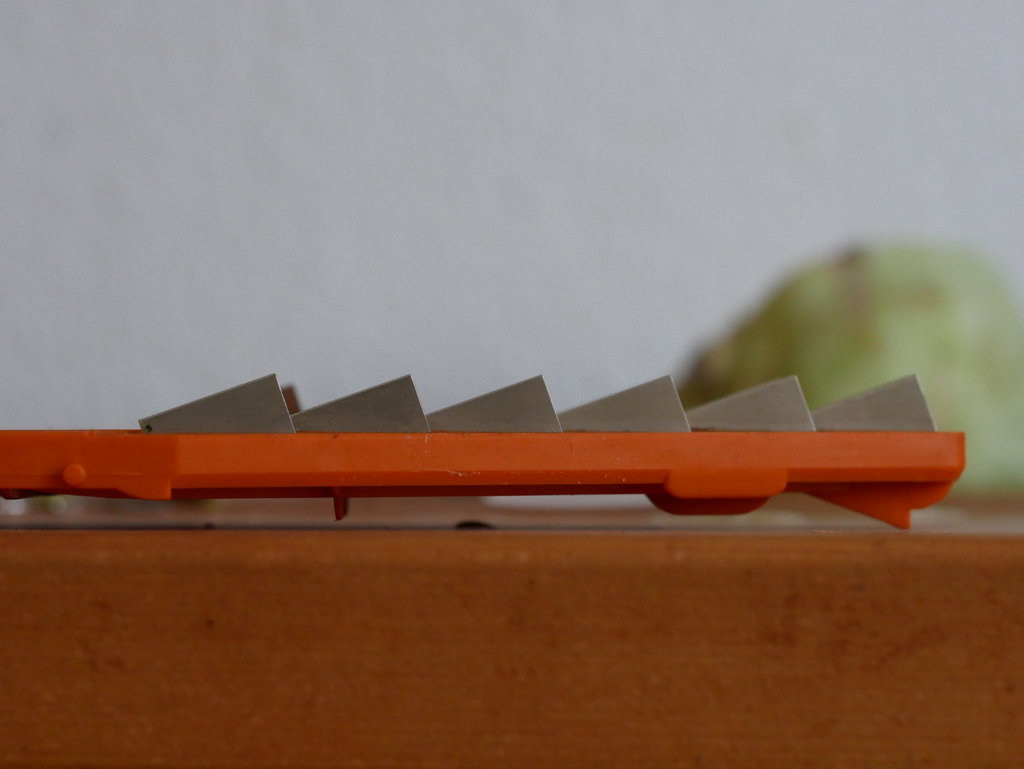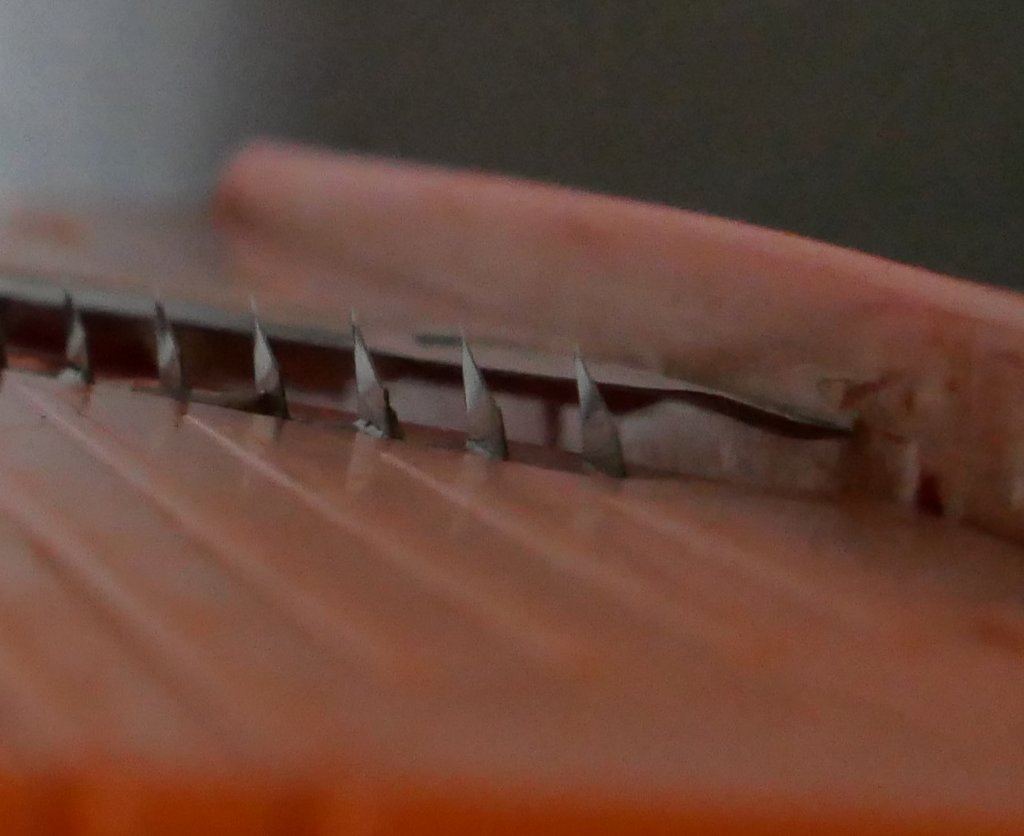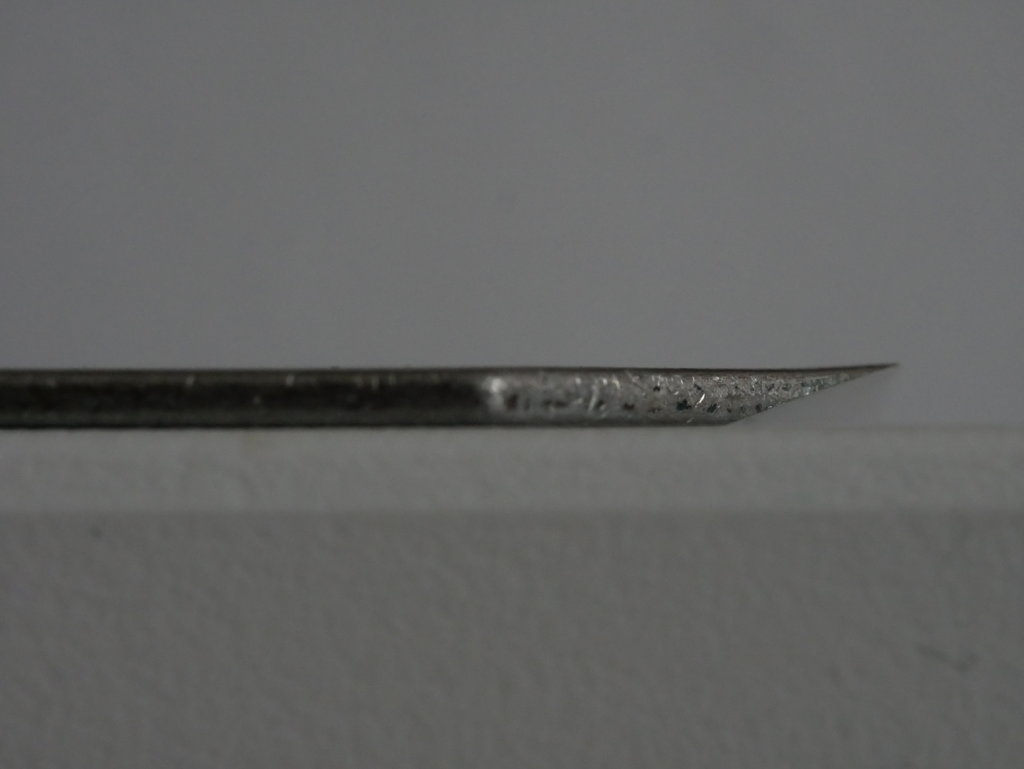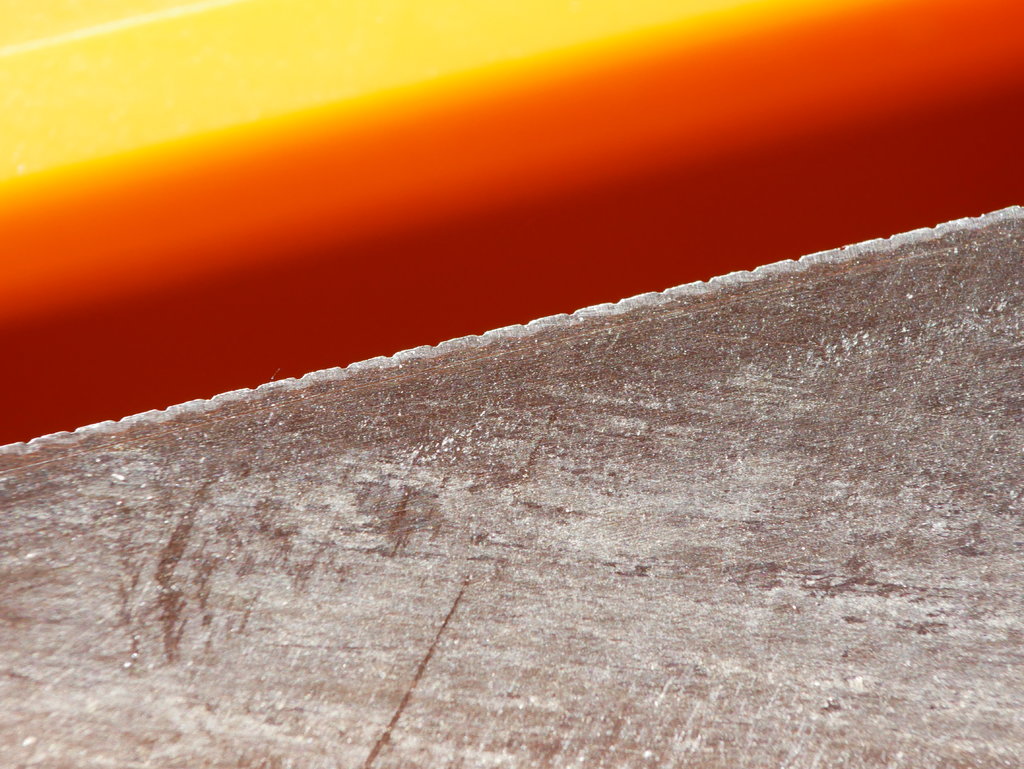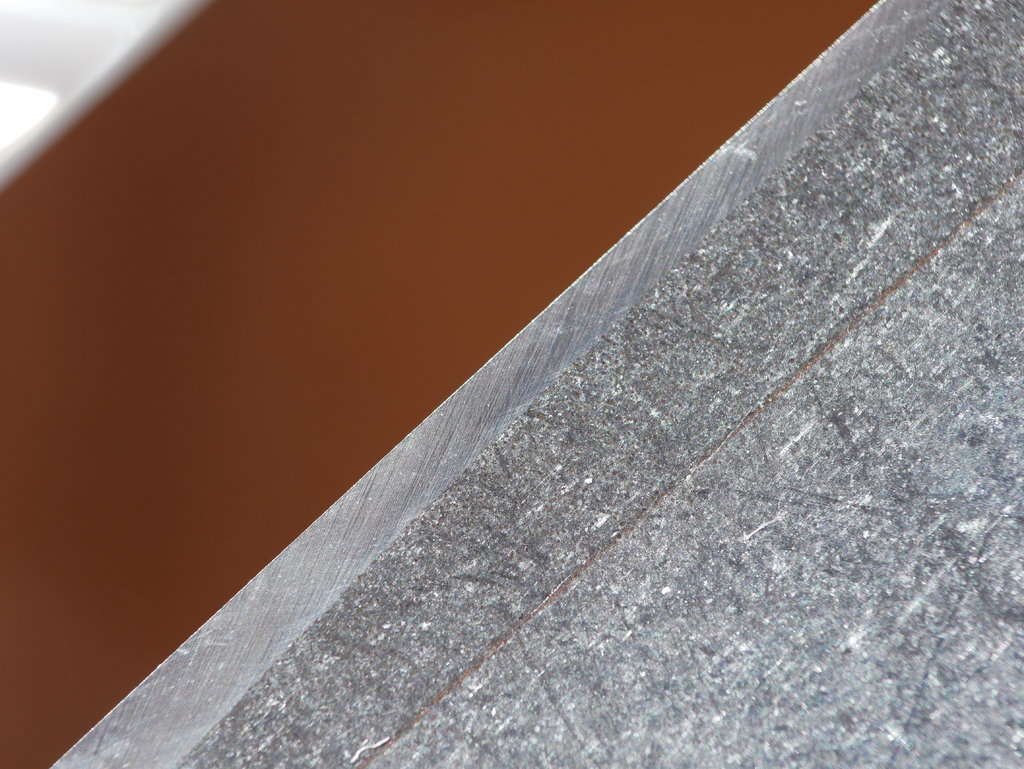GeneParmesan
Well-Known Member
A few years back, when I wanted to buy a mandoline slicer I got a Swissmar Borner V5/Börner V5, because my mother had a Börner V3 and was very happy with the model even after years of use.
A week ago I decided to get a Benriner Mandoline because it has the ability to cut very thin slices.
Since now I hove both slicers at home I want to give you my impressions about the two devices.
Maybe there is somebody out there deciding between the two who can profit from this.
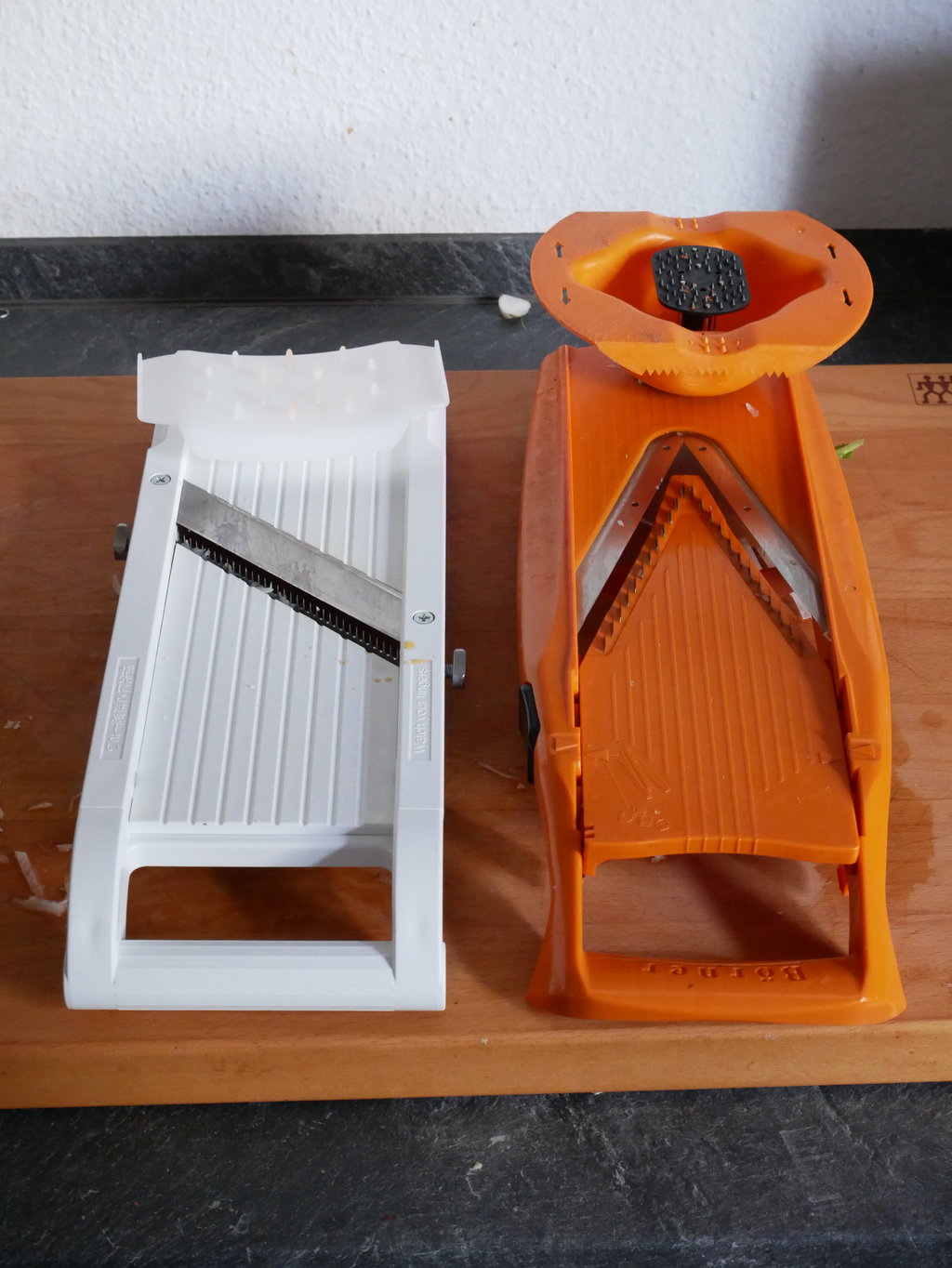
First of all both devices do their job. Allthough they are made out of plastik, they feel sturdy.
When cutting slices the results that can be achieved with the benriner are better.
First it is possible to cut slices that are a little thinner then with the Borner.
Although the Borner can cut thin slices that are at good for a cucumber salad, a coleslaw or beets carpaccio it is possible to go a little thinner with the benriner.
Although I don't want this every day for something like a shaved carrot salad this is very usefull. Even though the carrots become only thinner their texture feels very different.
Second the sliced vegetables have a slight V-Shape with my borner with the middle being slightly thinner then the edges.
Although it should be said that there can be some minimal height differences from left to right with the benriner.
Although the beniners blade can be sharpend (although it can be questioned how many people are really doing this) it is a little easier to cut through hard vegetables with the borner.
The blades of the borner are paper thin and much thinner then the blade of the benriner.
It should be said that there is an increased resistence with the borner in the middle where both blades meet.
But even in this are and even with 5 years of use the borner still cuts easier then the benriner.
That being said the benriner is perfectly usable and the differences are not anoying in any way. I just want to note every difference I notice.
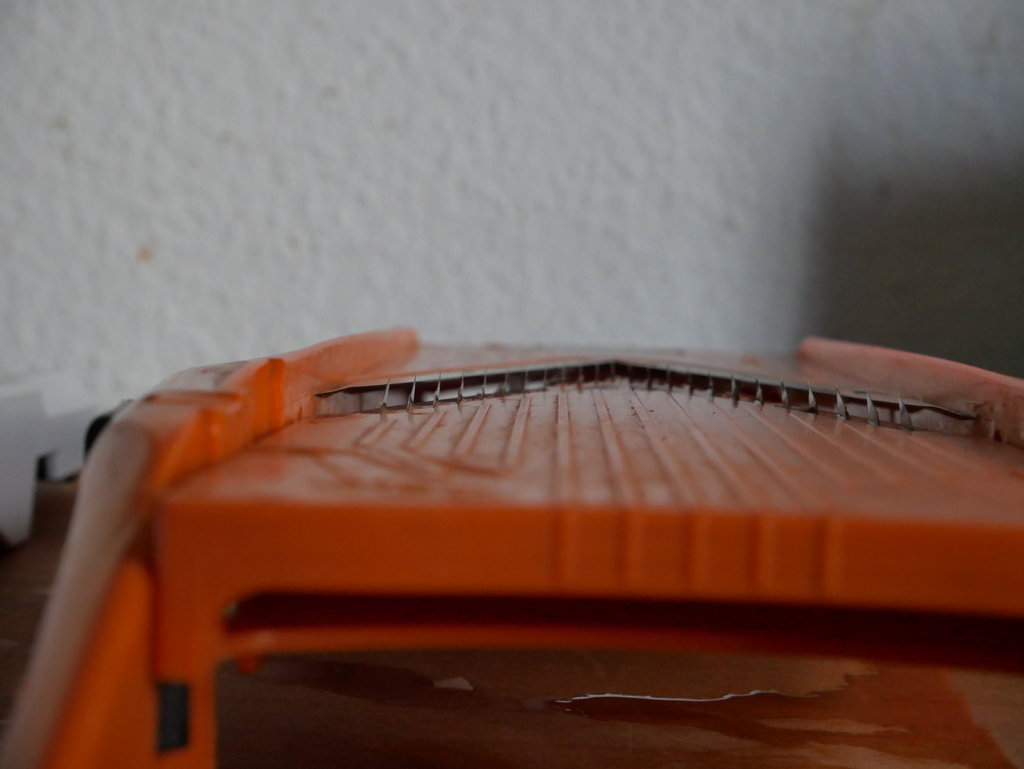
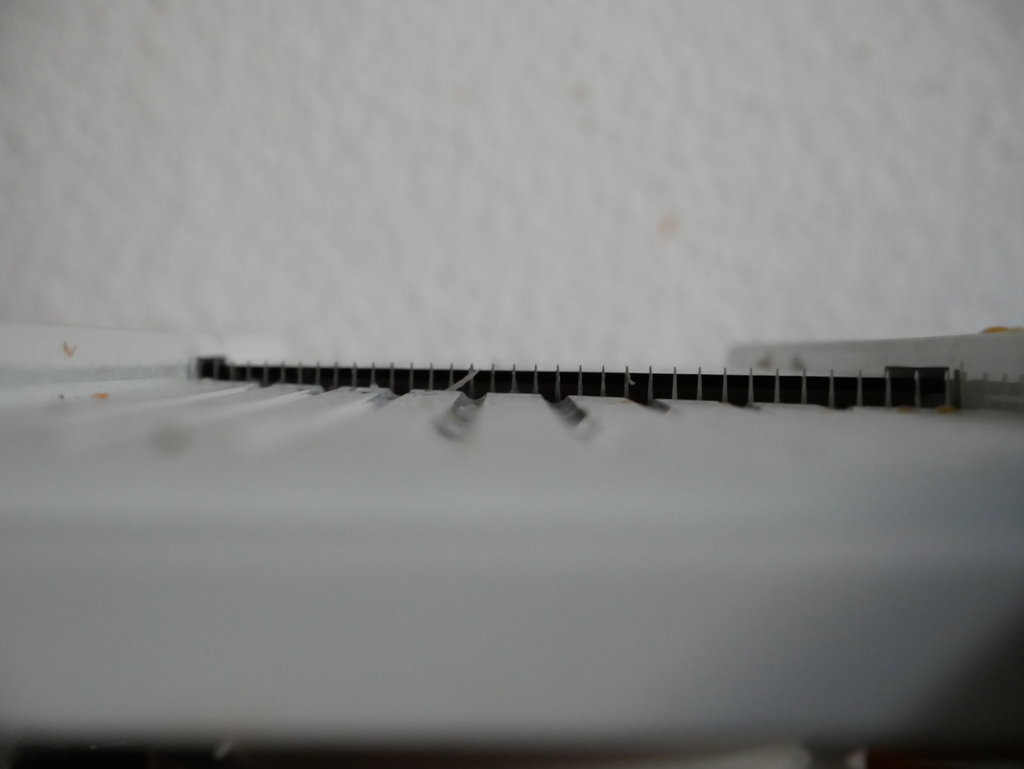
When cutting juliens I highly prefere the borner. I've only tried the Benriner once, because the cutting resistance is siginificantly higher then with the borner.
The reasons should be in the siginificantly thinner blades for juliene slicing.
Both pictures where shot with the same lens at the same distance.
Regarding the ease of use I also prefere the borner.
Compared to the benriner where the thickness is controlled by a gigantic screw with the borner you simply have 4 settings for thicknesses to chose from for slices and 2 for the julienes.
This allows for a faster setting of the desired thickness and faster assembly/dissassembly.
To be fair, though, most of the time I use either the two thinnest settings for coleslaw of the 1mm julienne blade.
Also if you have the same profile in using a mandoline you could simply let the benriner as it is without moving to the neutral position and store it in a box and have no disadvantage compared to the borner.
Furthermore I much prefere the hand guard of the borner. The one of benriner feels a bit to small and also, when the vegetable becommes increasinly thin the hand guard increases some noticable drag whenmoving the vegetables because the plasitic pieces that guide the guard along the mandoline are a little to narrow comapred to the width of the mandoline.
I hope you could gain some usefull information from this description.
Overall I prefere the Borner when I want to get things done or cut mandoline slices.
I.e. most of the time, especially during the week.
But if I want perfectly cut slices or want extremly thin slices I prefere the benriner.
The latter makes a noticably difference for me and is woth the additional space the device uses in my kitchen.
A week ago I decided to get a Benriner Mandoline because it has the ability to cut very thin slices.
Since now I hove both slicers at home I want to give you my impressions about the two devices.
Maybe there is somebody out there deciding between the two who can profit from this.

First of all both devices do their job. Allthough they are made out of plastik, they feel sturdy.
When cutting slices the results that can be achieved with the benriner are better.
First it is possible to cut slices that are a little thinner then with the Borner.
Although the Borner can cut thin slices that are at good for a cucumber salad, a coleslaw or beets carpaccio it is possible to go a little thinner with the benriner.
Although I don't want this every day for something like a shaved carrot salad this is very usefull. Even though the carrots become only thinner their texture feels very different.
Second the sliced vegetables have a slight V-Shape with my borner with the middle being slightly thinner then the edges.
Although it should be said that there can be some minimal height differences from left to right with the benriner.
Although the beniners blade can be sharpend (although it can be questioned how many people are really doing this) it is a little easier to cut through hard vegetables with the borner.
The blades of the borner are paper thin and much thinner then the blade of the benriner.
It should be said that there is an increased resistence with the borner in the middle where both blades meet.
But even in this are and even with 5 years of use the borner still cuts easier then the benriner.
That being said the benriner is perfectly usable and the differences are not anoying in any way. I just want to note every difference I notice.


When cutting juliens I highly prefere the borner. I've only tried the Benriner once, because the cutting resistance is siginificantly higher then with the borner.
The reasons should be in the siginificantly thinner blades for juliene slicing.
Both pictures where shot with the same lens at the same distance.
Regarding the ease of use I also prefere the borner.
Compared to the benriner where the thickness is controlled by a gigantic screw with the borner you simply have 4 settings for thicknesses to chose from for slices and 2 for the julienes.
This allows for a faster setting of the desired thickness and faster assembly/dissassembly.
To be fair, though, most of the time I use either the two thinnest settings for coleslaw of the 1mm julienne blade.
Also if you have the same profile in using a mandoline you could simply let the benriner as it is without moving to the neutral position and store it in a box and have no disadvantage compared to the borner.
Furthermore I much prefere the hand guard of the borner. The one of benriner feels a bit to small and also, when the vegetable becommes increasinly thin the hand guard increases some noticable drag whenmoving the vegetables because the plasitic pieces that guide the guard along the mandoline are a little to narrow comapred to the width of the mandoline.
I hope you could gain some usefull information from this description.
Overall I prefere the Borner when I want to get things done or cut mandoline slices.
I.e. most of the time, especially during the week.
But if I want perfectly cut slices or want extremly thin slices I prefere the benriner.
The latter makes a noticably difference for me and is woth the additional space the device uses in my kitchen.





